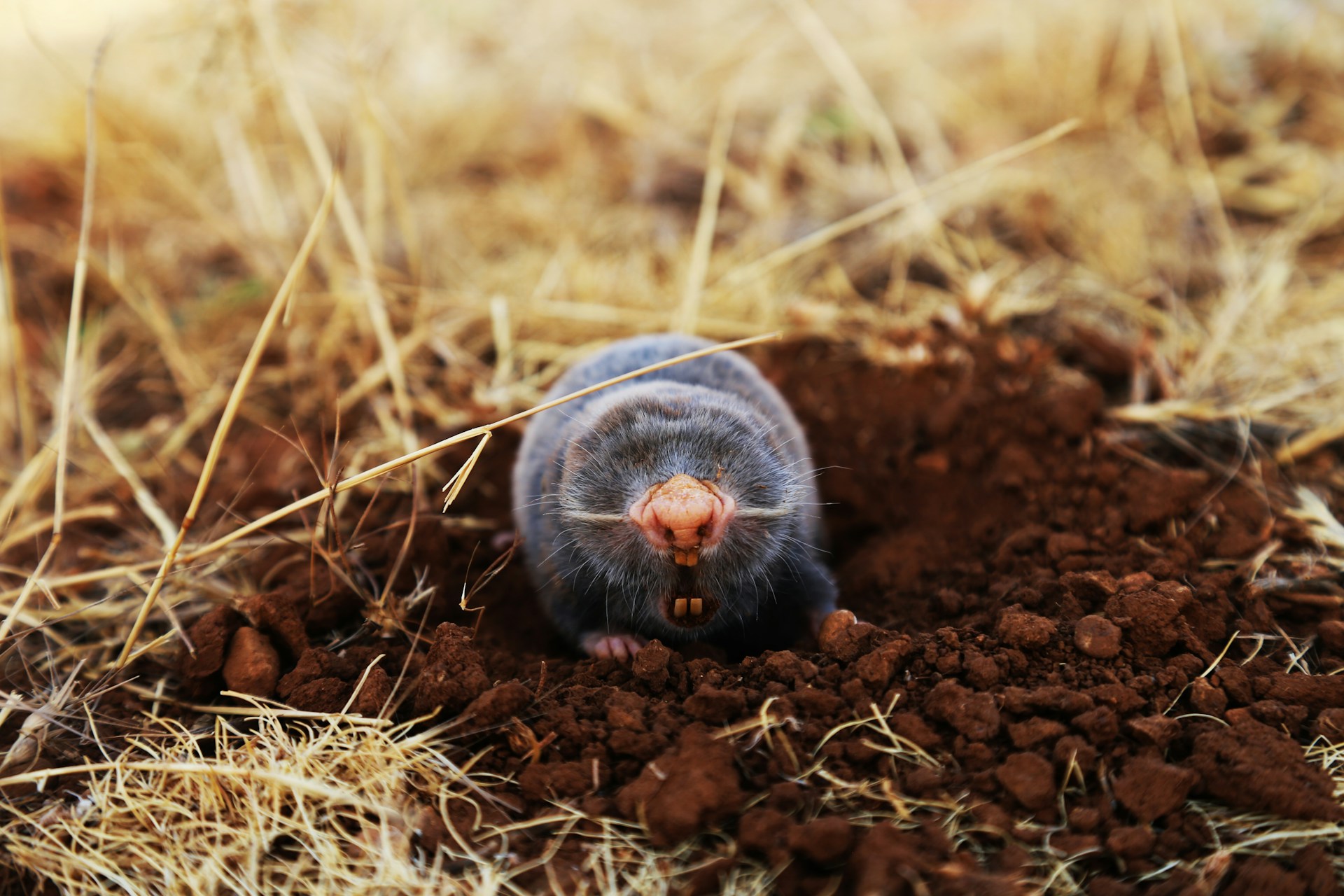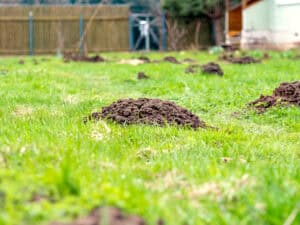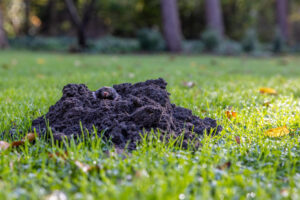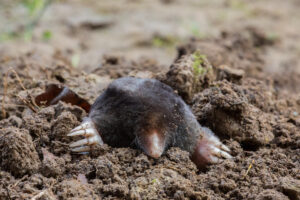
Picture this: You step outside to admire your garden, only to find unsightly mounds of soil disrupting your beautiful landscape. Moles have stealthily turned your lawn into a series of dirt piles and tunnels overnight. Dealing with these uninvited guests can be frustrating, leaving you wondering how to reclaim the tranquility of your outdoor space. Understanding how moles operate can make all the difference in keeping your garden pristine.
Gardeners work tirelessly to create vibrant and lush landscapes, making it disheartening to see their efforts undermined by small but determined creatures. But here’s the good news: with the right strategies in place, you can not only protect your garden but also restore its beauty. Let’s explore the habits of these critters and shed light on effective measures you can take to prevent them from wreaking havoc on your lawn.
Understanding Mole Behavior
To tackle a mole problem effectively, it’s crucial to grasp what makes them tick. Moles are insectivorous mammals that primarily dine on earthworms and grubs. Their search for food leads them to tunnel through the soil, inadvertently creating air pockets that damage root systems and disrupt garden aesthetics. This relentless digging is part of their natural behavior, as they create intricate labyrinths in search of nourishment.
You may wonder why these creatures choose your lawn for their digging endeavors. Well, moles are drawn to areas rich in organic material and moisture—a description that fits many well-maintained gardens. While they rarely feed on plants, the tunnels they craft can suffocate roots and cause patches of grass to wither.
Here’s a quick overview of what drives these underground intruders:
- Moles are most active during the day, particularly after rainfall.
- They dig both surface tunnels and deep tunnels; the former can ruin garden aesthetics.
- Their primary diet consists of grubs and earthworms, which can lead them straight to your garden if conditions are favorable.
Recognizing these patterns can help you develop effective interventions. While moles do provide some benefits, like soil aeration, their destructive impact on gardens often outweighs these positives. By understanding their biology and tendencies, you’re a step closer to safeguarding your green spaces.
Preventative Measures
Once you understand what attracts moles to your garden, it’s time to shift focus to prevention. An ounce of prevention is worth a pound of cure, especially where garden pests like moles are concerned. Start by examining your gardening habits and the landscape you’ve curated. Making small adjustments can discourage their presence without harming other beneficial wildlife.
Some useful strategies include:
- Removing food sources: Since moles feast on earthworms and grubs, consider using insect repellent methods to make your garden less appealing.
- Installing physical barriers: Underground fences or wire mesh placed around flower beds can prevent moles from invading.
- Choosing compatible plants: Some plant varieties naturally deter moles. Consider planting marigolds or castor beans around the perimeter of your garden.
- Maintaining dry soil conditions: Moles prefer moist environments. By ensuring proper drainage, you can make your garden less attractive to these pests.
Implementing these techniques not only protects your garden but also maintains ecological balance. By creating a less hospitable environment, you’ll reduce the likelihood of mole invasions and keep your outdoor space thriving all year round.
Effective Mole Removal Methods
When it comes to ridding your garden of moles, using the right removal methods is key. While there are various techniques out there, professional trapping remains the most recommended solution. Traps are specifically designed to capture moles without causing unnecessary harm. By strategically placing these traps in active tunnels, you can effectively reduce the mole population in your yard.
Professional services have the expertise needed to identify the most productive locations for trap placement. This ensures a quicker and more humane solution to your mole problem. Attempting this task on your own can lead to frustration if you lack experience, as it’s easy to misjudge a mole’s active areas. By relying on professionals, you ensure that the job is carried out efficiently and with care.
Here’s how professional mole trapping works:
- Assessment: Experienced mole catchers start by assessing your lawn to find where moles are most active.
- Selection of traps: There are different types of traps available, and professionals choose the most suitable for your situation.
- Strategic placement: Placing traps along active tunnels is crucial for success. Incorrect placement can lead to poor results.
- Monitoring: After setting traps, regular checking ensures that captured moles are dealt with promptly and traps are reset if necessary.
Taking this approach not only removes the current problem but also helps ensure long-term peace of mind. Once moles are cleared, it’s easier to prevent new ones from moving in.
Maintaining a Healthy Lawn
After tackling the mole problem, attention should turn to healing the damage left behind and promoting a healthy lawn. Mole activity often results in unsightly ridges and dead patches in your grass. Restoring these areas to their former glory can be satisfying and enhance the overall look of your garden.
Begin by leveling the disturbed soil. Gently rake over the ridges to even out the terrain. If you encounter holes, fill them with fresh soil. Once the ground is smooth, overseeding can help restore grass in patchy areas. Choose a grass seed that matches your existing lawn for the most seamless result.
As part of ongoing lawn maintenance, consider:
- Aerating the soil to improve air circulation and nutrient absorption.
- Watering your grass efficiently to encourage deep root systems.
- Fertilizing with a balanced mix of nutrients to promote lush growth.
Regular care not only helps repair damage but also strengthens your lawn against future invasions. A thick, healthy lawn is less attractive to moles because it’s harder for them to find food through dense grass roots.
Enjoy Your Beautiful, Mole-Free Garden
Reclaiming your garden from moles can indeed take some effort, but the satisfaction of preserving and enjoying a beautiful outdoor space makes it all worthwhile. By understanding mole behavior and employing effective preventative and removal strategies, you protect your investment and enjoy a thriving garden season after season.
Whether you’re an avid gardener or someone who just loves relaxing in a private oasis, safeguarding your lawn from moles ensures every moment spent outdoors is delightful. Remember, while tackling this alone can sometimes seem tempting, enlisting expert help often results in quicker, lasting solutions and peace of mind.
If maintaining a beautiful garden free of mole disruptions is your goal, consider professional help with the removal of ground moles from Trap Your Moles. With expert care, you can enjoy a peaceful yard without the frustration of unwanted digging and damage.







No comment yet, add your voice below!